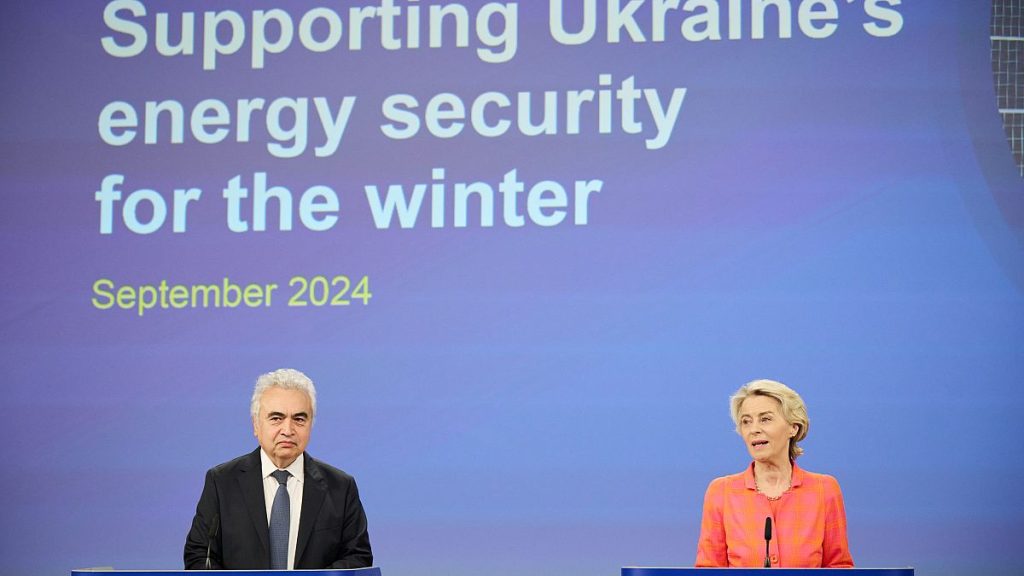With 80% of thermal plants destroyed, Kyiv is facing a difficult winter due to repeated Russian attacks on critical infrastructure. The EU has stepped in to help, with frozen Russian assets seized by the EU to be used to provide 15% of Ukraine’s energy needs ahead of the winter. Additionally, the EU is ready to send €100 million for repairing power plants and boosting renewables, offering around 2.5 Gigawatts of capacity, and a further €60 million for humanitarian aid and shelters in Ukraine’s worst-affected regions. Commission President Ursula von der Leyen stated that the EU has offered over €2 billion for energy security since Russia invaded in 2022. She emphasized the need for Russia to pay for the destruction it caused and for ongoing support for Ukraine’s energy resilience.
The International Energy Agency has suggested that the EU could further aid Ukraine by stepping up electricity transmission to the country without compromising energy security in the bloc. With Moldova also depending on transit arrangements between Russia and Ukraine that expire at the end of this year, there is significant uncertainty for Moldova’s electricity supply and gas deliveries to Transnistria in particular. Despite these challenges, the EU remains committed to supporting its eastern neighbor, with Greek Prime Minister Kyriakos Mitsotakis raising concerns about the impact of synchronizing Ukraine with the EU electricity grid. Mitsotakis noted the increased power prices in Greece and other member states as a result of Russia’s attacks on the Ukrainian grid.
The financial aid for Ukraine is expected to increase further as member states intensify talks on a $50 billion loan for Ukraine, to be backed by the world’s seven major developed democracies using Russia’s immobilized assets as collateral. The interest earned by the frozen state funds would gradually repay the loan so national governments do not have to plug the major hole in Ukraine’s budget. The EU is exploring ways to make the plan immune from a possible veto from Ukraine-sceptic Hungary, which could jeopardize the loan. Overall, the EU is taking concrete steps to support Ukraine’s energy needs and ensure stability in the region.
In response to concerns about higher energy prices for Europeans due to supporting Ukraine’s energy needs, an EU official emphasized that price volatility is driven by various factors, including a mismatch between supply and demand, a lack of storage, and inefficient use of interconnectors. The official highlighted the need to explore alternative possibilities and methods to address the situation, suggesting that legal possibilities would be considered in collaboration with the Greek government. The EU is aware of the regional crisis caused by the increased power prices in countries like Greece, Bulgaria, Romania, Hungary, Croatia, and others as a result of Russia’s attacks on the Ukrainian grid.
Commission President Ursula von der Leyen reiterated the importance of ongoing support for Ukraine’s energy resilience, emphasizing the need for Russia to compensate for the destruction it caused. The EU’s efforts to provide financial assistance and infrastructure support to Ukraine demonstrate a commitment to helping the country navigate the challenges it faces, especially as winter approaches. By leveraging frozen Russian assets and exploring potential financial aid options, the EU is working to ensure stability in the region and mitigate the impact of Russia’s actions on Ukrainian infrastructure. Moving forward, continued collaboration and strategic planning will be essential to address the energy needs of Ukraine and the broader implications for European energy markets.


